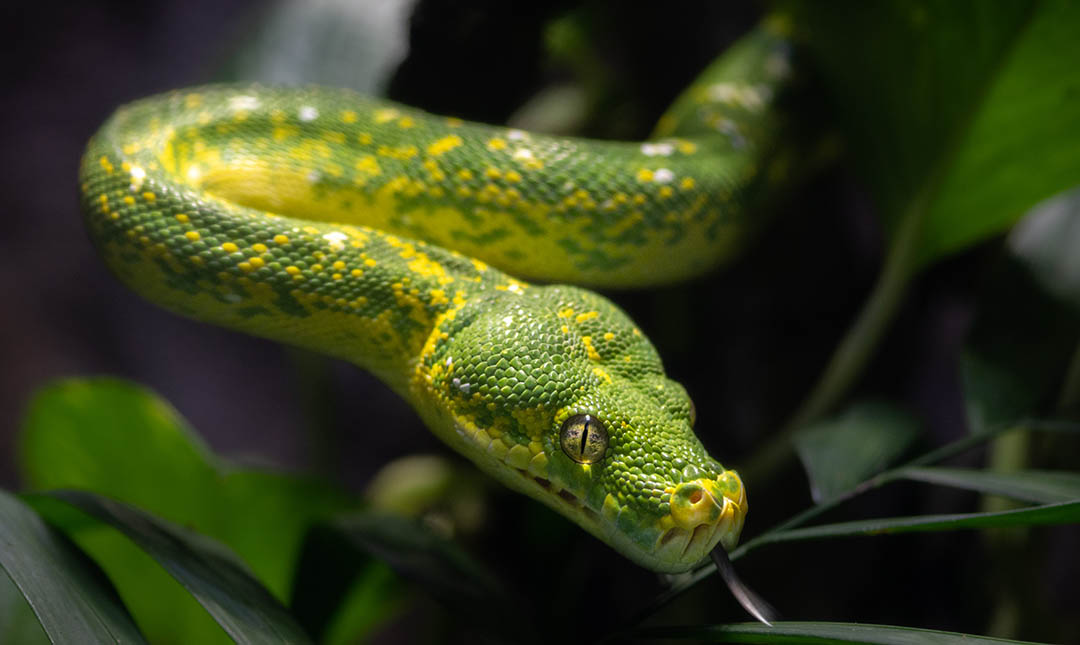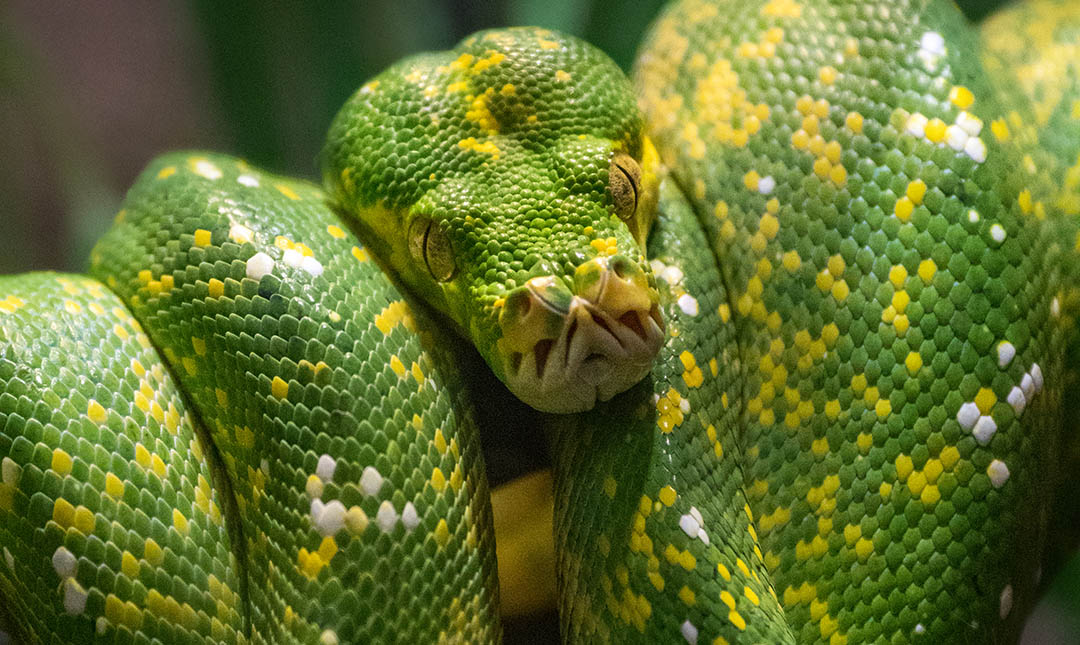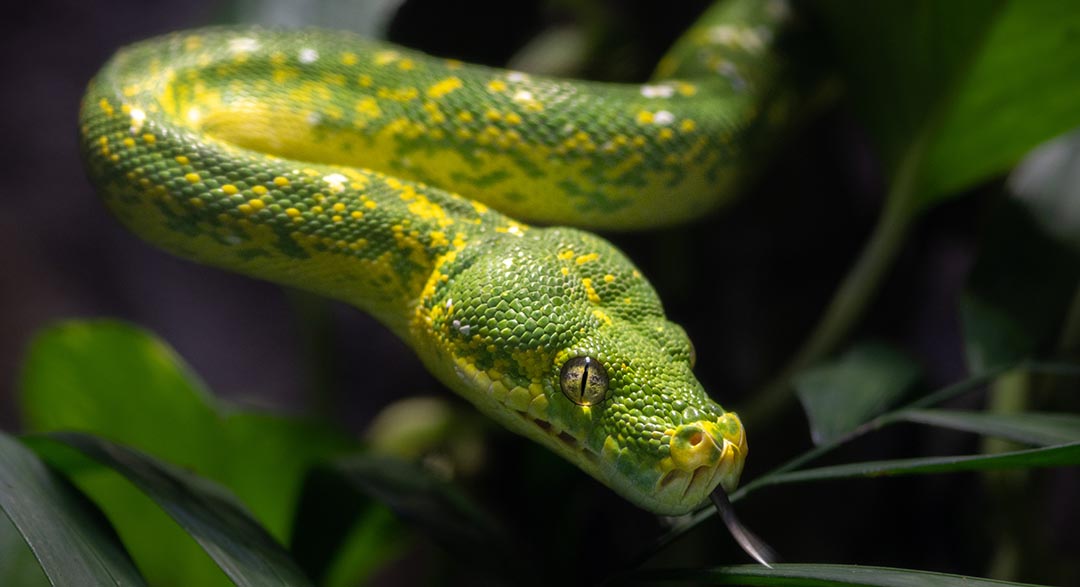About
Green tree pythons live in the rainforests of Australia and New Guinea. This arboreal snake has many adaptations that make it a successful tree dweller. Long prehensile (grasping) tails help them climb and anchor their bodies on branches. Bright coloration blends in with the lush green foliage of the tree canopy. This python drapes itself on a branch in a series of concentric loops with its head hanging downward, ready to strike prey. They are ambush predators and hunt mostly at night, waiting patiently for prey to pass by. Temperature-sensing pits near their noses allow them to detect warm-blooded prey even in the dark. Occasionally they use the tips of their tails to mimic worms in order to lure prey.
After mating, a female lays a clutch of 10 to 30 eggs in a tree cavity or among epiphytic plants. She wraps her body around the eggs during incubation, which lasts about 50 days. During this period, she does not eat. Once hatched, the young are on their own. Small hatchlings are yellow or red, which helps them blend into the lower branches and leaf litter at the forest edges, where they typically reside. When they are about a year old, their coloration changes to the bright green of adults, who spend more time among the leaves in the tree canopy. The biggest threats to green tree python populations are habitat loss and illegal collection for the pet trade.
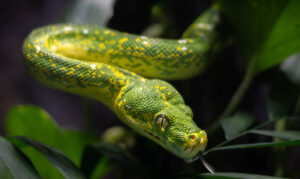

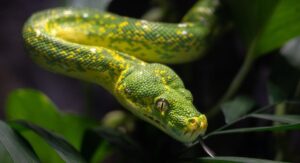
THREATS
Their bright yellow, red and green colors make these snakes very popular as household pets.
Habitat
The green tree python is found in the lowland tropical rainforests of Australia, New Guinea, and eastern Indonesia. They are the most arboreal python species, spending the majority of their time up in the trees.
Diet
Pythons, like boas, are constrictors. Instead of using venom to dispatch their prey, they immobilize them in a tight grip until their quarry suffocates. Prey is consumed headfirst, and these snakes can open their jaws 180 degrees, allowing them to consume prey up to three times larger than their heads. After a meal, a python may not need to eat again for several weeks or months. Small hatchlings eat invertebrates. Juveniles hunt small animals, such as lizards. Adults eat small mammals, including rodents, as well as lizards and birds.
Physical Characteristics
Green tree pythons can grow to be about six feet long and weigh 3.5 pounds. Females are slightly larger and heavier. Lifespan is estimated at 15 to 20 years.
LOCATION WITHIN THE ZOO
You’ll find this animal in the LAIR. See Zoo Map.

